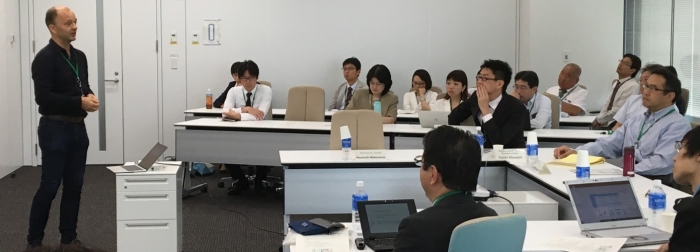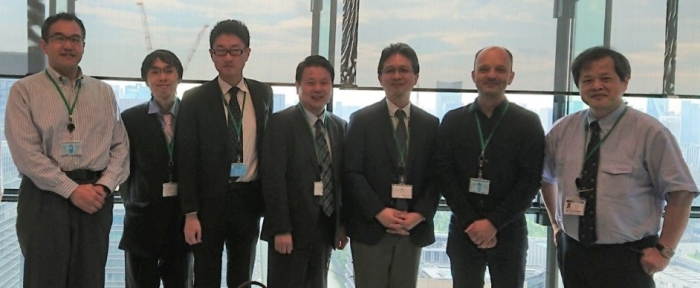GEM Japan Michael Baudis, Swiss Personalized Health Network, visited AMED to have an in-person meeting with Japanese Data Scientists
Reported by Chihiro Hata, AMED Science and Technology Researcher
8 October, 2019
Michael Baudis, who is a Driver Project Champion of Swiss Personalized Health Network (SPHN), visited AMED to join a meeting with Japanese data scientists. The meeting with a goal of establishing connections between Japanese data scientists and SPHN/ELIXIR/GA4GH/SIB covered - 1) genomic data sharing using the Beacon protocol and participation in its development, 2) development and adoption of GA4GH protocols and data schemas, and 3) connection of Japanese groups/projects with ELIXIR communities, specifically the Human Copy Number Variation community in cancer and genetic diseases.
At the beginning of the meeting, Hidewaki Nakagawa (RIKEN) told that GEM Japan was eager to establish a close relationship with SPHN by making use of this opportunity - named ‘CNV collaboration’.
 Discussion
Discussion
Then four Japanese data scientists introduced their research activities on copy number variation.
- Takeshi Ikeuchi (Niigata University) talked about current situation of dementia in Japan, followed by a relation of the amyloid precursor protein (APP) gene copy number with the onset of Alzheimer's disease. Based on a result that attributes somatic mutations observed only in brain to brain disease development, Genomic CNV mosaicism in brain is found important to understand dementia.
- Chikashi Terao (RIKEN) explained a method to detect CNVs and mosaic mutations using Biobank Japan (BBJ) data. A comparison of the BBJ data with the data in UK biobank revealed immune-related genes different among populations are frequently defective. In addition, the identification of novel copy number neutral LOH (Loss of heterozygosity) in the DNA repair-related genes such as NBN, MRE11, and CTU2 were introduced.
- Yuichi Shiraishi (National Cancer Center) presented a result of detection of structural variation (SV) from TCGA exome sequencing data using GenomonSV, which is a pipeline for SV detection from cancer genome. The distributions of SVs in oncogenes were the same as the one in tumor suppressor genes. Furthermore, the GenomonSV was shown to detect complex structural polymorphism called Ambiguous SV, which is hardly identified using conventional methods.
- Naomichi Matsumoto (Yokohama City University) introduced how to utilize a long read sequencing technology for the detection of CNVs, including establishment of analysis tools and pipelines. The analysis revealed that an increase of GGC repeat in the NOTCH2NLC gene region is observed in affected individuals not only from familial neuronal intranuclear inclusion disease (NIID) but from sporadic NIID. In addition, a result showing copy numbers of GGC repeat as well as nucleotide sequence have a significant effect on the disease was also shown.
 Lunch with Makoto Suematsu, President of AMED
Lunch with Makoto Suematsu, President of AMED
All the presentations triggered active discussions among the participants, and it was a good opportunity for all to realize the importance of CNV data sharing.
Last updated 10/17/19

